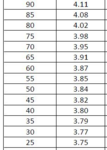Mark, I understand that the 18650 cells in the 52 volt Juiced Battery pack are a Lipo formula.
@bikerjohn ,
This is entirely inaccurate. None of the mainstream ebikes use LiPo. Juiced 52V pack is
NOT based on LiPo formula!!
They come under 18650 category with graphite as the anode, NMC (Nickel Manganese Cobalt) or NMO (Nickel Manganese Oxide) basec cathode and a liquid electrolyte.
The cells look like this in a pack:
There are 6 types of lithium ion batteries. All 6 are lumped into a family known as lipo for short.
Please refrain from spreading wrong information. None of the 18650 cells are classified under LiPo family. This is as inaccurate as it can get.
Li-Po cells use gel-like polymer electrolyte unlike organic liquid electrolyte (LiPF6 with EC/DMC/PC additives) found in 18650 cells. The cathode may have slightly different chemistry as well.
Li-Po suffer from short lifecycle compared to 18650 cells. Otherwise, we would find them on all bikes. Also, the gravimetric energy density is less (not the power density!).
The advantage of LiPo is they are lighter and can be moulded to complex shapes within the cellphones, making for easier fabrication process. But, these days, you can find Li-ion cells in cellphones as well.
A short summery of the differences:

Ravpower is a huge vendor of powerbanks . They have thousands of verified reviews on Amazon and they do offer neat products.
https://www.amazon.com/External-RAVPower-16750mAh-Time-Tested-Flashlight/dp/B00MQSMEEE/
Their blog provides some correct information. Here is the blog post and the related pic.
http://blog.ravpower.com/2017/06/lithium-ion-vs-lithium-polymer-batteries/

Re: the original thread question.
Juiced or Ebikes.ca do offer correct information. If the values at 80% vary by 0.2 volts, there is absolutely nothing to worry about. It's alright.
As a PhD researcher working with scientists in this field, it makes me annoyed to see lots of misinformation floating around.
Here is a somewhat less techy video explaining the differences between different kinds of cells.


